- Himalayan Panoramas
- Architectural Marvels
- Cultural Vibrancy
- Traditional Bhutanese Life
- Buddhist Symbolism
- Flora and Fauna
- Sustainable Travel
- Varied Landscapes
- Best Time to visit Bhutan for Photography
- Important Tips while traveling Bhutan for the Photography Trips
- FAQs of Photography in Bhutan: Capturing the Land of the Thunder Dragon
Photography in Bhutan opens a window to the Land of the Thunder Dragon, a realm where spectacular Himalayan vistas, rich cultural heritage, and architectural splendors seamlessly blend. Set against the backdrop of pristine natural beauty and steeped in centuries-old Buddhist traditions, Bhutan offers photographers a diverse palette ranging from the awe-inspiring Paro Taktsang (Tiger’s Nest Monastery) to the lively hues of the Tshechu festivals. This Himalayan kingdom is a haven for capturing compelling narratives through your lens, be it the tranquil landscapes, the rhythmic dance of traditional life, or the elusive wildlife that calls its vast forests home.
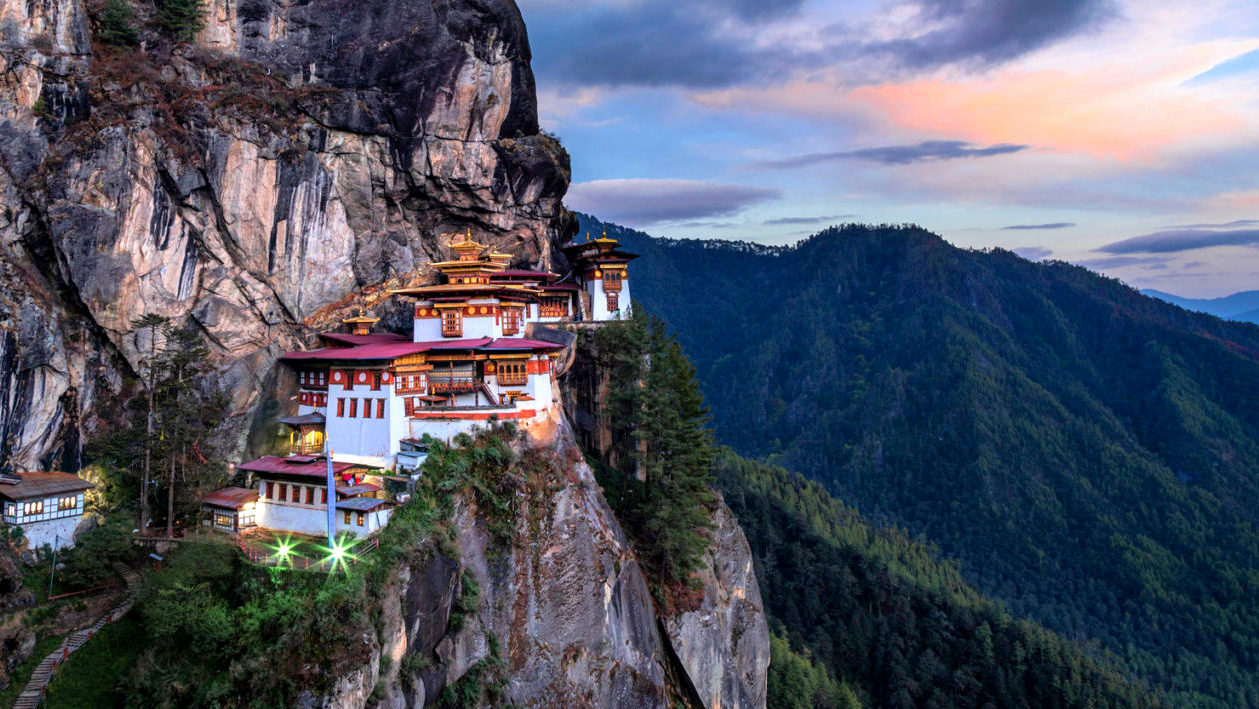
At Druk Holidays, we offer unmatched experiences for Photography in Bhutan, inviting you to capture the essence of the Land of the Thunder Dragon. With our deep understanding of Bhutan’s breathtaking Himalayan landscapes, vibrant cultural festivities, and majestic architectural sites, we ensure every photography enthusiast leaves with a portfolio full of stunning images and a heart full of unforgettable memories. Our tailored tours guide you through Bhutan’s most photogenic locations, from the iconic Tiger’s Nest Monastery to the lively Tshechu festivals, making sure you’re perfectly positioned to capture the beauty and spirit of Bhutan.
Himalayan Panoramas
The Himalayan panoramas of Bhutan offer some of the most breathtaking and awe-inspiring views in the world, making it a paradise for photographers. These vast and majestic landscapes stretch across the northern frontier of Bhutan, presenting a dramatic backdrop of towering peaks, some of which rise above 7,000 meters. The unique geographical setting allows for a variety of perspectives to capture the grandeur of the Himalayas, from sweeping vistas to detailed compositions of rugged terrain.
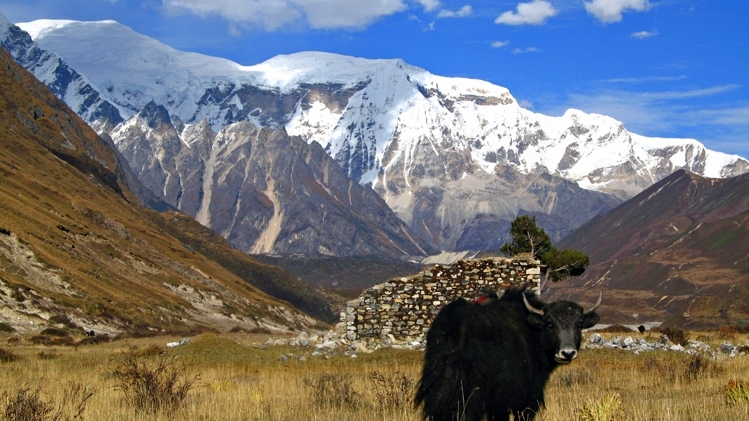
Key Locations for Himalayan Panoramas:
- Dochula Pass: Situated between Thimphu and Punakha, Dochula Pass offers a stunning 360-degree panoramic view of the Himalayan mountain range. On clear days, it’s possible to see the highest peaks, making it a prime location for landscape photography.
- Chele La Pass: As the highest motorable pass in Bhutan, Chele La connects the valleys of Paro and Haa, offering unparalleled views of Mount Jomolhari and Jichu Drake. The area is also known for its vibrant rhododendron forests, adding splashes of color to the mountainous landscape.
- Bumthang Valley: Often considered the spiritual heartland of Bhutan, Bumthang Valley provides a different perspective on the Himalayas, with rolling hills and rivers framing the distant peaks. The area's sacred sites and temples add a cultural dimension to the natural beauty.
Photography Tips:
- Timing: Visit during the early morning or late afternoon when the light is soft and the mountains are likely to be clear. The golden hours provide the best light for photography, enhancing the textures and colors of the landscape.
- Equipment: A wide-angle lens is essential for capturing the vastness of the Himalayas. A tripod can also be helpful, especially for long-exposure shots that smooth out clouds and give a surreal quality to the landscape.
- Composition: Look for elements that can lead the eye into the picture, such as winding roads or rivers. Incorporating foreground elements can add depth and scale to your shots, emphasizing the enormity of the Himalayan peaks.
Preservation and Respect: While capturing the beauty of the Himalayas, it's crucial to respect the environment and local customs. Stick to established paths, avoid disturbing wildlife, and follow the principles of Leave No Trace to ensure these landscapes remain pristine for generations to come.
The Himalayan panoramas in Bhutan are not just a feast for the eyes but also a testament to the country's unspoiled beauty. Whether you're a seasoned photographer or an amateur with a keen eye, the Himalayas in Bhutan offer endless inspiration and the chance to capture some of the most magnificent landscapes on Earth.
Architectural Marvels
Bhutan's architectural marvels, deeply rooted in its Buddhist traditions and the natural environment, stand as a testament to the kingdom's rich cultural heritage and artistic ingenuity. From imposing dzongs (fortresses) that serve both as monastic centers and administrative hubs to serene monasteries perched on precipitous cliffs, Bhutanese architecture is characterized by its harmonious balance with nature, intricate woodwork, and vibrant colors. These structures are not just buildings; they are symbols of Bhutan's identity and spirituality, offering photographers a unique blend of the sacred and the majestic.
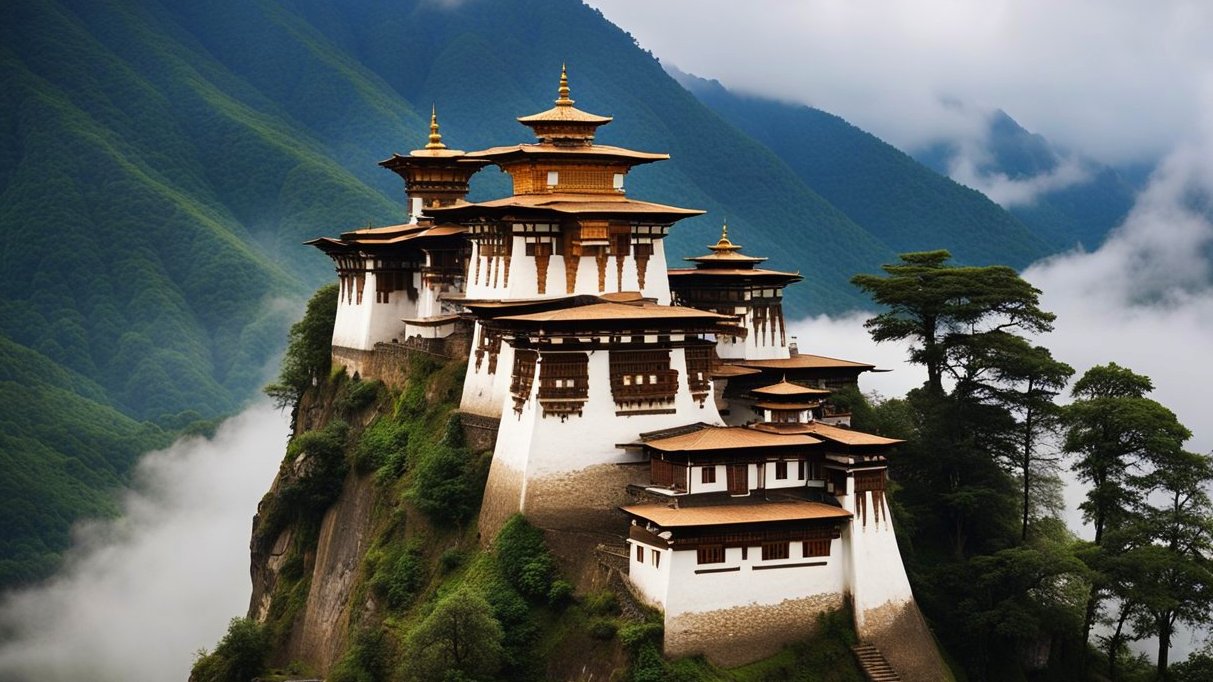
Key Architectural Sites:
-
Tiger’s Nest Monastery (Paro Taktsang): The iconic cliffside monastery, clinging to a granite cliff 900 meters above the Paro valley, is perhaps the most photographed site in Bhutan. This sacred site, associated with Guru Padmasambhava’s meditation in the 8th century, offers stunning views and a captivating subject for photographers, especially when shrouded in mists or illuminated by the first light of dawn.
-
Punakha Dzong: Known as the Palace of Great Happiness, Punakha Dzong is a magnificent example of Bhutanese architecture. Located at the confluence of the Pho and Mo Chhu rivers, its strategic position and the sheer beauty of its structure, surrounded by lilac jacaranda trees in bloom, make it a picturesque site.
-
Trongsa Dzong: Strategically positioned on a spur overlooking the Mangde Chhu valley, Trongsa Dzong is the largest dzong fortress in Bhutan. Its labyrinth of temples, corridors, and courtyards, along with its significant historical importance, offers myriad angles and perspectives for photography.
-
Rinpung Dzong, Paro: Also known as Paro Dzong, this fortress-monastery is a fine illustration of Bhutanese architecture’s majesty. The intricate paintings and carvings that adorn its walls tell tales of Buddhist lore and offer a glimpse into the spiritual life of the Bhutanese people.
Photography Tips:
- Lighting: Capture these architectural wonders during the golden hours for soft, directional light that enhances textures and colors. Night photography can also reveal a different, serene aspect of these sites, especially when they're lit up during festivals.
- Perspective and Composition: Experiment with different angles and compositions to capture the grandeur of these structures. Wide-angle lenses can capture the entirety of the buildings, while telephoto lenses can highlight architectural details and textures.
- Respect and Permission: Always be mindful of local customs and regulations regarding photography, especially inside the dzongs and monasteries. Some areas may restrict photography, so it's essential to seek permission where required.
Bhutan's architectural marvels offer more than just photographic subjects; they provide a window into the soul of Bhutanese culture and spirituality. Each structure tells a story of faith, history, and artistry, making them indispensable for photographers seeking to capture the essence of Bhutan.
Cultural Vibrancy
Bhutan's cultural vibrancy is a captivating tapestry of ancient traditions, spiritual practices, and colorful festivals that embody the essence of its unique Himalayan heritage. This cultural richness provides an extraordinary backdrop for photographers, offering a window into the soulful and communal life of the Bhutanese people. From the intricate dances at Tshechus to the everyday rituals that define Bhutanese life, the opportunity to capture moments of profound meaning and beauty is unparalleled.
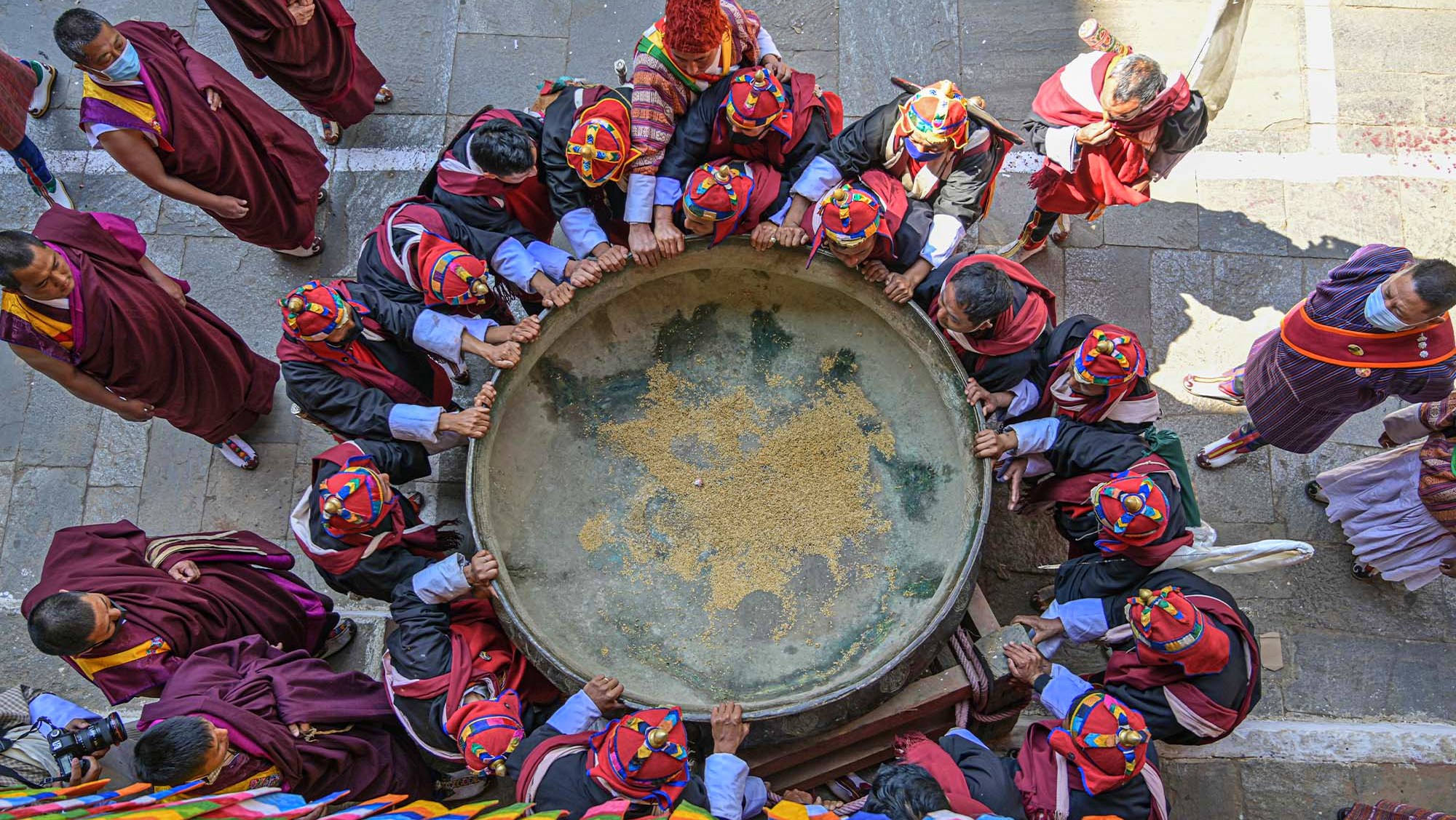
Key Aspects of Bhutanese Cultural Vibrancy:
-
Tshechu Festivals: These are the most vibrant and significant religious festivals in Bhutan, held in honor of Guru Padmasambhava. Tshechus are characterized by elaborate masked dances (Cham dances), traditional music, and vivid costumes, drawing communities together in a spirit of celebration and devotion. The Paro and Thimphu Tshechus are particularly famous, attracting both locals and tourists to witness the spectacle.
-
Traditional Arts and Crafts: Bhutan's commitment to preserving its traditional arts—collectively known as the Zorig Chusum, or the thirteen arts and crafts—offers photographers a chance to document intricate thangka paintings, exquisite sculptures, and the detailed process of weaving. These art forms are not only aesthetically pleasing but also rich in symbolic meaning.
-
Daily Life and Customs: Beyond the festivals and art, the daily life of Bhutanese people, with their traditional dress (the Gho for men and Kira for women), unique architectural homes, and agricultural practices, provides a glimpse into the country's enduring cultural traditions. Photographing these aspects of Bhutanese life allows for a deeper understanding and appreciation of the nation's identity.
-
Spiritual Practices: Bhutan's spiritual life is deeply intertwined with Buddhism, which influences everything from architecture to daily routines. Capturing moments of prayer, meditation, and the ubiquitous prayer flags against the Himalayan backdrop can convey the profound spirituality that permeates the country.
Photography Tips:
- Respect and Sensitivity: Always approach cultural events and practices with respect. Seek permission before photographing individuals, especially during private moments or religious ceremonies.
- Capture Emotions: Focus on capturing the emotions and interactions among people, which can tell a deeper story than posed or static shots.
- Use of Light: Utilize natural light to your advantage, especially during outdoor festivals and activities. The golden hour can add a magical quality to your shots.
- Storytelling: Try to convey a story through your images. This could involve capturing a sequence of events at a festival or documenting the process of creating traditional art.
Bhutan's cultural vibrancy is not just visually stunning; it's a testament to the country's deep-rooted traditions and the importance of community and spirituality. For photographers, this means an endless array of subjects ripe with emotion, color, and life, offering a chance to capture the vibrant spirit of the Land of the Thunder Dragon.
Traditional Bhutanese Life
Traditional Bhutanese life is a rich tapestry of customs, spirituality, and harmony with nature, deeply embedded within the serene landscapes of the Himalayas. This way of life, characterized by simplicity, contentment, and a profound connection to Buddhist principles, offers photographers an intimate glimpse into the soul of Bhutan. Capturing the essence of traditional Bhutanese life requires an understanding and appreciation of its subtleties, from the daily rituals to the communal gatherings that define the rhythm of life in this Himalayan kingdom.
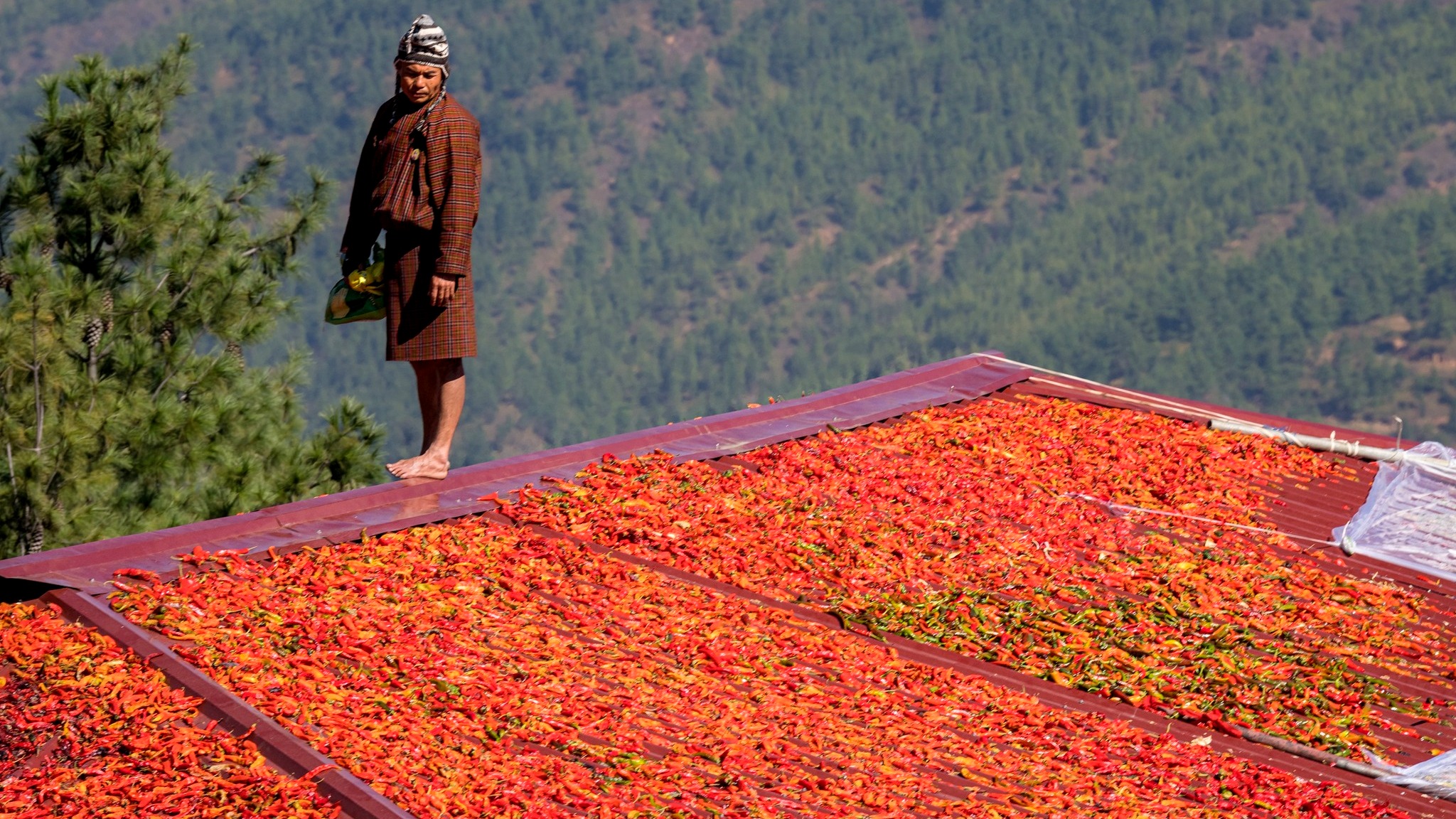
Key Elements of Traditional Bhutanese Life:
-
Agricultural Practices: Much of Bhutan's population is engaged in agriculture, following age-old farming methods that have been passed down through generations. The terraced fields, particularly when lush with rice or dotted with traditional farmhouses, present a picturesque landscape that speaks volumes about Bhutanese dependence on and respect for the land.
-
Traditional Dress: The national dress of Bhutan, the Gho for men and the Kira for women, is not just attire but a symbol of Bhutanese identity and pride. These garments, worn with grace and elegance, add a vibrant cultural dimension to photographs, especially during daily activities or special occasions.
-
Architecture: Bhutanese architecture, with its distinctive style seen in homes, temples, and dzongs, reflects a deep integration of environmental and spiritual values. The wooden frames, brightly colored window frames, and intricately painted motifs offer a visual feast, showcasing the craftsmanship and aesthetic sensibility of the Bhutanese people.
-
Spiritual Practices: Spirituality is woven into the fabric of daily life, with prayer flags, wheels, and small shrines commonplace in the Bhutanese landscape. These elements, set against the backdrop of the Himalayas or within the quiet of a home, provide poignant subjects for photographers aiming to capture the serene and contemplative aspects of Bhutanese life.
-
Community and Festivities: The sense of community in Bhutan is strong, with festivals, religious ceremonies, and local markets (tshongs) serving as vital social gatherings. These events, rich in tradition and color, offer opportunities to capture the joy, unity, and cultural richness of Bhutanese society.
Photography Tips:
- Engage and Respect: When photographing aspects of traditional life, it's essential to engage with people respectfully, seeking permission before taking photos and showing genuine interest in their way of life.
- Look for Details: While grand vistas are compelling, the essence of Bhutanese life often lies in the details—be it the texture of handwoven fabric, the intricacies of a farmhouse, or the simplicity of daily chores.
- Capture Authentic Moments: Candid shots that capture people in natural, unposed moments often tell a more powerful story of daily life and convey a sense of place and emotion.
- Use Natural Light: Make the most of natural light to highlight textures and colors, especially in indoor settings or during the golden hours of sunrise and sunset.
Photographing traditional Bhutanese life offers a window into a world where time seems to move at a different pace, and where the values of community, spirituality, and harmony with nature are paramount. It's an opportunity to not only capture stunning images but to tell the story of Bhutan's heart and soul through the lens.
Buddhist Symbolism
Buddhist symbolism in Bhutan is a profound expression of the nation's deep-rooted spirituality and religious practices, permeating every aspect of Bhutanese life and culture. This rich tapestry of symbols, rituals, and architectural elements offers photographers an extraordinary opportunity to capture the essence of Bhutan's spiritual identity. From prayer flags fluttering against the Himalayan backdrop to intricate mandalas and serene monastic settings, the imagery of Buddhist symbolism is both visually stunning and deeply meaningful.
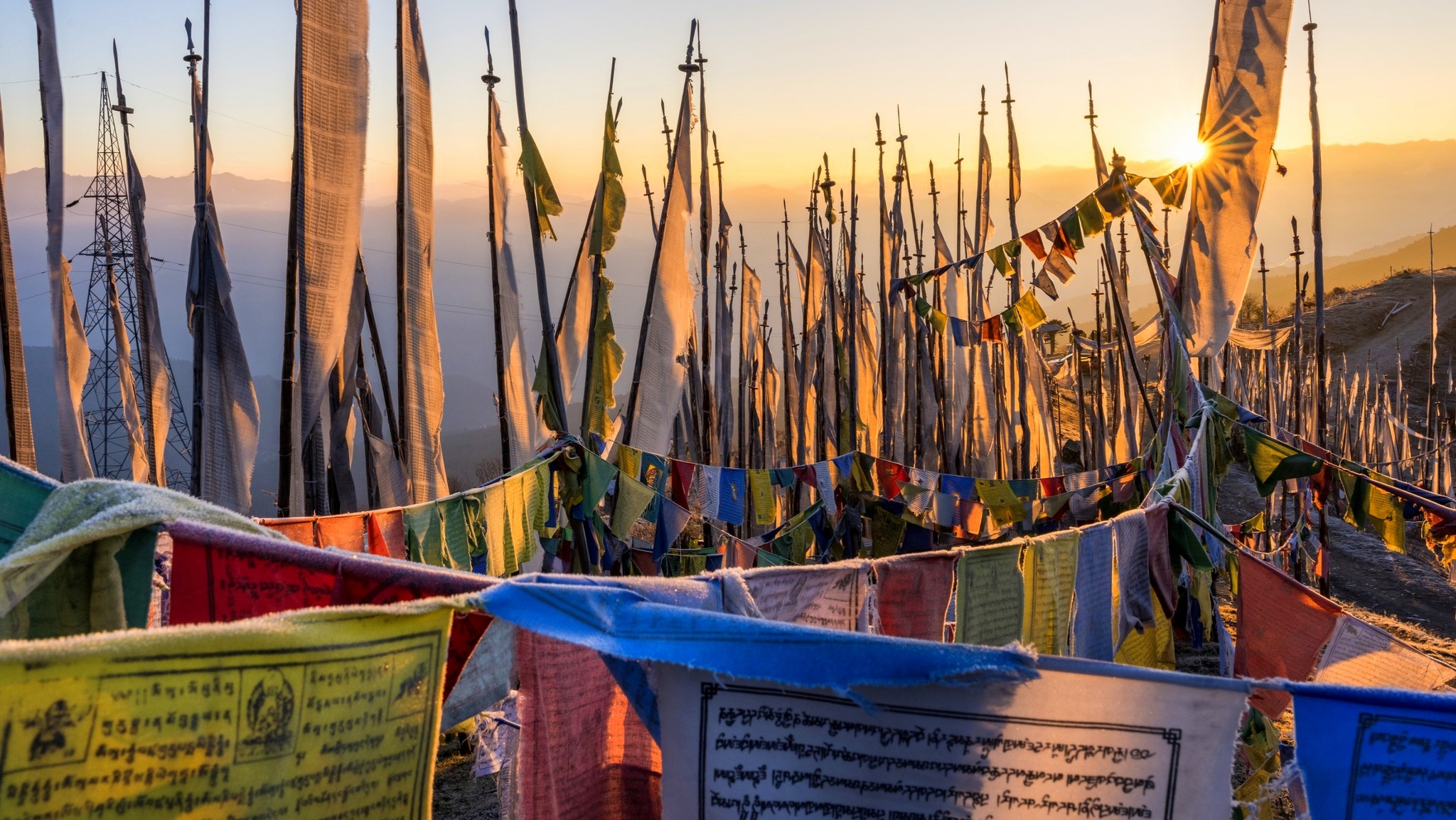
Key Elements of Buddhist Symbolism in Bhutan:
-
Prayer Flags: Colored flags are a common sight across Bhutan, symbolizing the spread of Buddhist teachings through the wind. Capturing these flags, especially when set against the natural beauty of the mountains, can convey a sense of peace and spiritual aspiration.
-
Prayer Wheels: These cylindrical wheels, often found in temples and along pathways, are filled with mantras and spun by the faithful to accumulate merit and wisdom. Photographs of individuals engaging with prayer wheels can reflect the devotion and the continuity of spiritual practice.
-
Stupas (Chortens): These sacred monuments represent the Buddha's mind and offer a focal point for meditation and worship. Their presence in the landscape, often at significant locations, symbolizes peace and enlightenment, providing a serene subject for photography.
-
Thangkas and Murals: Thangkas (religious paintings) and murals within monasteries and dzongs are rich in symbolism, depicting the life of the Buddha, various deities, and other spiritual themes. Capturing the detail and artistry of these works can offer insight into Buddhist philosophy and aesthetics.
-
Architectural Elements: Bhutanese architecture incorporates numerous symbolic elements, from the mandala-inspired layouts of dzongs to the protective deities carved above doorways. Photographing these details requires a keen eye for composition and an appreciation for their spiritual significance.
Photography Tips:
- Respect and Sensitivity: Always approach religious symbols and practices with respect. Be mindful of local customs, especially when photographing inside temples or during ceremonies.
- Focus on Details: The intricacies of Buddhist art and symbolism can be compelling subjects. Use macro lenses or close-up shots to capture the exquisite detail of thangkas, carvings, and ritual objects.
- Capture the Context: While focusing on symbolism, also consider the broader context—how these symbols interact with the environment and the people. Wide-angle shots that include both the symbol and its surroundings can convey a deeper narrative.
- Consider the Light: Natural light can enhance the textures and colors of symbolic objects and settings. Early morning or late afternoon light can cast a warm, ethereal glow on your subjects.
Buddhist symbolism in Bhutan is not merely decorative; it is a vibrant manifestation of the country's spiritual heart. Through thoughtful and respectful photography, one can capture the profound beauty and tranquility of these symbols, offering viewers a glimpse into the soul of Bhutanese Buddhism.
Flora and Fauna
Bhutan's commitment to environmental conservation and its unique geographical diversity have made it a sanctuary for a wide range of flora and fauna, many of which are endemic to the Eastern Himalayas. This kingdom's pristine ecosystems range from subtropical forests in the south to alpine zones in the north, hosting an array of biodiversity that is as fascinating to scientists as it is to photographers. Capturing Bhutan's natural inhabitants requires patience, respect for nature, and a keen eye for the fleeting moments that reveal the essence of the wild.
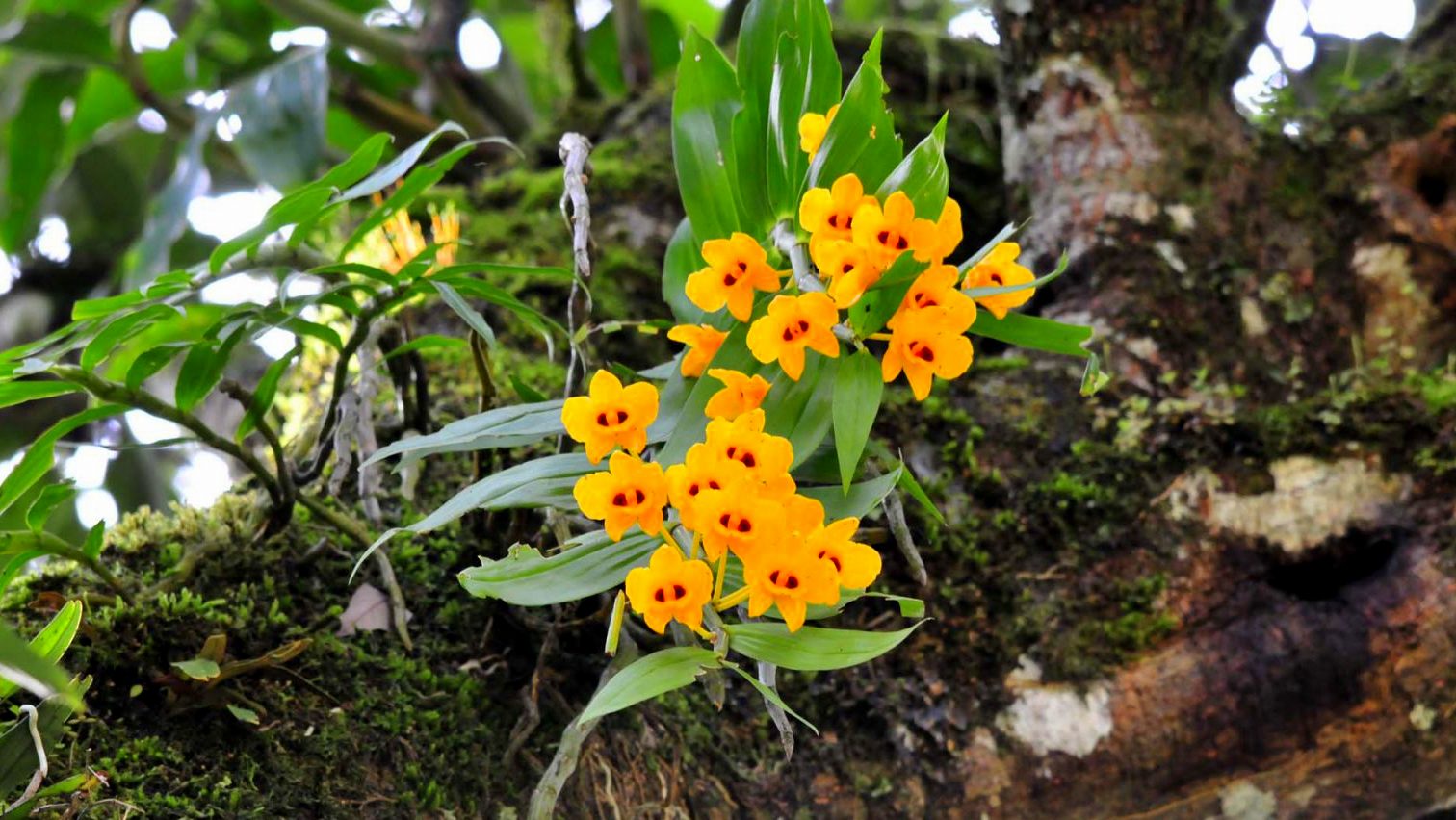
Key Highlights of Bhutan's Flora and Fauna:
-
Bengal Tiger: Bhutan's dense forests are one of the last strongholds for the majestic Bengal tiger, which roams from the lowland jungles to high-altitude forests, showcasing Bhutan's successful conservation efforts.
-
Snow Leopard: The elusive snow leopard is a prized sighting in the high-altitude regions of Bhutan. Capturing this rare creature, even at a distance, is a moment of triumph for any wildlife photographer.
-
Red Panda: This adorable and shy creature, with its distinctive reddish-brown fur and bushy tail, inhabits the temperate forests of Bhutan. Spotting a red panda among the trees offers a delightful subject for photography.
-
Himalayan Monal: Known for its iridescent plumage, the Himalayan Monal is one of Bhutan's most colorful birds, making it a sought-after subject for birdwatchers and photographers alike.
-
Rhododendrons: Bhutan's hillsides bloom with over 46 species of rhododendrons, creating a spectacular display of color in the spring. These flowers not only add a burst of color to the landscape but also attract a variety of pollinators.
-
Blue Poppy: Bhutan's national flower, the blue poppy, grows at high altitudes and is known for its striking blue petals. Finding and photographing this rare beauty is a highlight for many nature photographers.
Photography Tips:
- Patience is Key: Wildlife photography requires patience and perseverance. Animals are often elusive, so be prepared to wait for the perfect shot.
- Use the Right Gear: A telephoto lens is essential for capturing wildlife from a safe distance. A tripod can also help stabilize your shots, especially in low light conditions or when using long lenses.
- Respect the Wildlife: Always maintain a safe distance from animals to avoid disturbing them. Use natural cover to conceal your presence as much as possible.
- Best Times for Photography: Early morning and late afternoon are usually the best times for wildlife photography, offering soft light and increased animal activity.
- Capture the Ecosystem: While specific animals or plants may be your primary subject, capturing them within their natural habitat adds context and depth to your photographs.
Bhutan's flora and fauna offer a unique window into the natural world, where the sacredness of life is celebrated and preserved. Photographing this kingdom's wildlife and plant life not only brings joy and fulfillment but also raises awareness of the importance of conservation and the fragile beauty of our planet.
Sustainable Travel
Sustainable travel in Bhutan is a fundamental principle that aligns with the country's deeply ingrained values of environmental conservation, cultural preservation, and social well-being. Bhutan is renowned for its commitment to maintaining its pristine environment and rich cultural heritage, underpinned by the philosophy of Gross National Happiness (GNH). For photographers and travelers alike, embracing sustainable travel practices in Bhutan is not just encouraged; it's an integral part of the journey. Here’s how sustainable travel manifests in Bhutan and tips for travelers:
Bhutan’s Approach to Sustainable Travel:
- Tourism Regulation: Bhutan controls the impact of tourism through a minimum daily package rate and a limit on visitor numbers. This approach ensures that travel and tourism are managed sustainably, contributing to conservation efforts and community welfare.
- Conservation Efforts: A significant portion of the daily tariff paid by visitors goes towards funding free education, healthcare, and environmental conservation projects in Bhutan.
Tips for Sustainable Photography and Travel in Bhutan:
- Minimize Environmental Impact: Always stick to marked trails and paths while exploring Bhutan’s breathtaking landscapes to prevent disrupting the natural habitat. Use refillable water bottles and avoid single-use plastics.
- Support Local Communities: Engage with and purchase from local artisans and vendors. This not only contributes to the local economy but also offers a deeper understanding and appreciation of Bhutanese culture.
- Cultural Sensitivity: Bhutanese culture is rich and deeply spiritual. Show respect for local customs, traditions, and religious practices. This includes dressing modestly, removing shoes before entering temples, and asking permission before photographing people.
- Waste Management: Be conscientious about where you dispose of waste, especially in remote areas. Bhutan has a strong ethos of environmental stewardship, and visitors are expected to adhere to this by minimizing their waste and ensuring they leave no trace.
- Wildlife Respect: Maintain a safe and respectful distance from wildlife. Use zoom lenses for close-up shots instead of approaching too closely, which can stress animals.
- Learn and Educate: Take the time to learn about Bhutan’s environmental policies and cultural practices. Share this knowledge with fellow travelers to promote a broader understanding and respect for sustainable travel practices.
Participating in Bhutan’s Sustainable Travel Ethos:
Travelers to Bhutan are uniquely positioned to witness the benefits of sustainable travel practices firsthand. By choosing to travel sustainably, visitors not only enhance their own experience but also contribute to the preservation of Bhutan’s unparalleled natural beauty and cultural integrity for future generations. Bhutan offers a model for sustainable tourism that balances development with conservation and cultural preservation, making every visit a lesson in responsible travel.
Varied Landscapes
Bhutan's varied landscapes are a testament to the country's remarkable geographical diversity, which ranges from lush subtropical plains in the south to rugged Himalayan mountains in the north. This diversity not only contributes to Bhutan's unique ecological richness but also offers photographers a wide array of captivating vistas and environments to explore and capture. From serene valleys and dense forests to majestic peaks and fast-flowing rivers, Bhutan's landscapes are as varied as they are breathtaking.
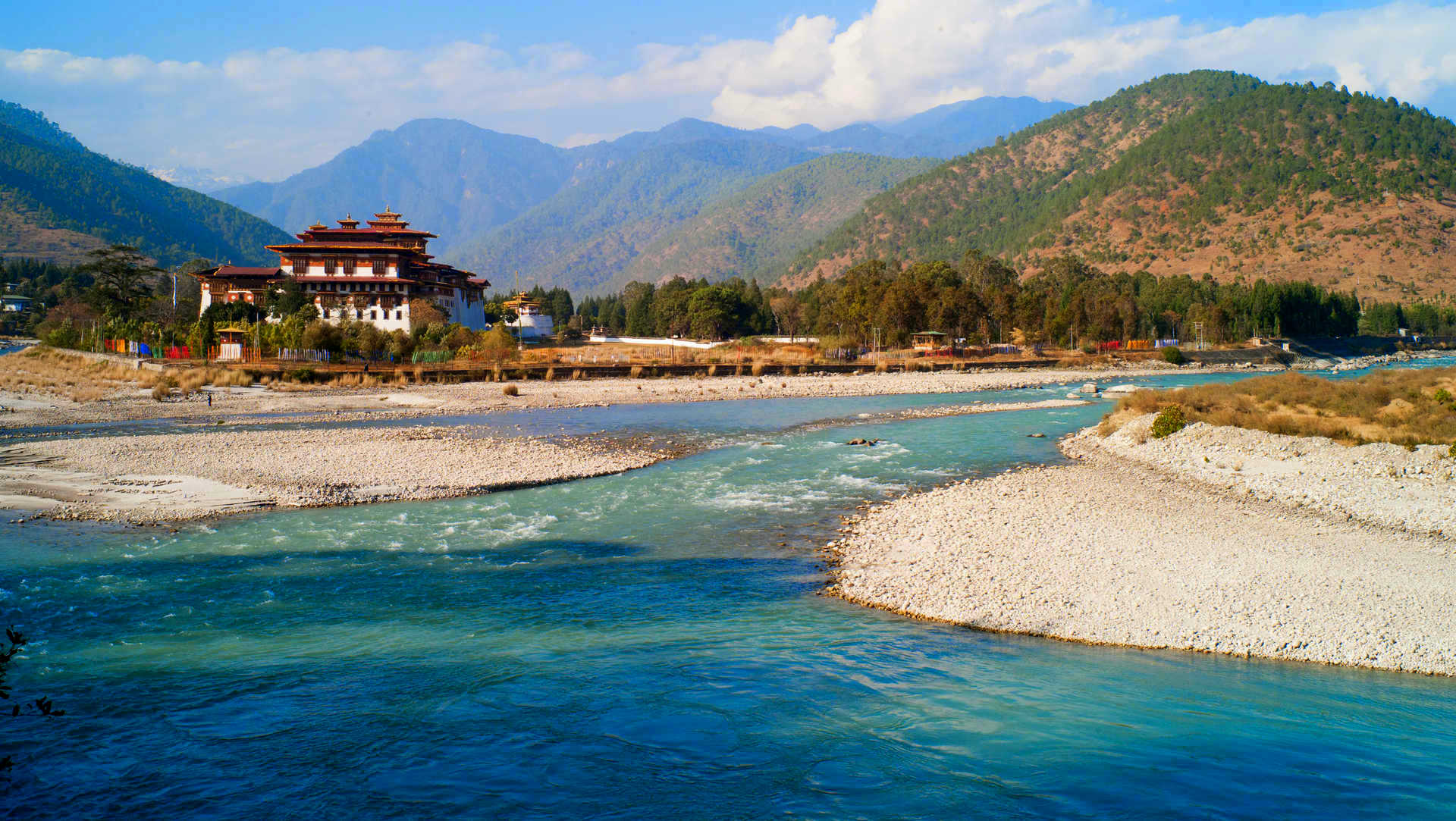
Key Highlights of Bhutan's Varied Landscapes:
-
Subtropical Forests: In the southern regions, Bhutan boasts lush subtropical forests that are home to diverse wildlife and a plethora of plant species. These verdant landscapes provide a stark contrast to the higher, more arid regions and are ideal for capturing the richness of Bhutan's flora and fauna.
-
Alpine Zones: As you ascend into the higher elevations, the scenery changes dramatically to reveal alpine zones where the air is thinner, and the landscape is dominated by snow-capped peaks and high-altitude meadows. The alpine regions offer unmatched views of Bhutan's highest mountains, providing stunning backdrops for landscape photography.
-
Rivers and Waterfalls: Bhutan's numerous rivers, fed by Himalayan glaciers, carve through valleys and gorges, creating dramatic waterfalls and serene riverine landscapes. Capturing the movement of water against these rugged backdrops can produce mesmerizing photographs.
-
Valleys: The valleys of Paro, Thimphu, Punakha, and Bumthang are central to Bhutanese life and culture. These valleys, with their fertile lands and historical sites, offer a blend of cultural and natural photographic opportunities. Each valley has its unique charm, from terraced rice fields to ancient fortresses and monasteries.
-
Rhododendron Forests: Particularly in spring, the hillsides and higher elevations burst into a riot of color with blooming rhododendrons. The variety of colors and the sheer scale of these blooms add a vibrant layer to the already stunning landscapes.
Photography Tips:
- Time Your Visit: Depending on your photographic interests, time your visit to coincide with the seasons that best reflect the aspect of Bhutan you wish to capture, such as the rhododendron bloom in spring or the clear mountain views in autumn.
- Experiment with Perspectives: Bhutan's varied landscapes offer countless perspectives. Don't hesitate to experiment with different angles, compositions, and focal lengths to capture the essence of these diverse environments.
- Respect the Environment: Bhutan places a strong emphasis on conservation and environmental respect. Always adhere to local guidelines and practices to minimize your impact on these pristine landscapes.
Bhutan's landscapes are not just a feast for the eyes but also a source of spiritual inspiration, reflecting the country's deep respect for nature. For photographers, these varied landscapes provide endless opportunities to capture the natural beauty and ecological diversity of this unique Himalayan kingdom.
Best Time to visit Bhutan for Photography
The best time to visit Bhutan for photography hinges on what you want to capture, as the country offers different scenic and cultural experiences throughout the year. Here are the optimal times based on various photographic interests:
Spring (March to May)
- Why Visit: Spring is ideal for capturing Bhutan's natural beauty. The landscape is vibrant with blooming flowers, including rhododendrons and wildflowers, across valleys and mountains. The clear skies provide excellent conditions for landscape photography, and the lighting is generally favorable.
- What to Capture: Lush landscapes, blooming flowers, and cultural festivals. The Paro Tshechu, one of Bhutan’s most significant religious festivals, usually takes place in March or April, offering vibrant photo opportunities.
Autumn (September to November)
- Why Visit: Autumn is renowned for its clear skies and crisp air, offering stunning views of the Himalayan peaks. This season also hosts numerous festivals, including the popular Thimphu Tshechu, with its colorful dances and large gatherings, providing rich subjects for photographers.
- What to Capture: Dramatic Himalayan mountain ranges, architectural shots of dzongs and monasteries under clear skies, and cultural events.
Winter (December to February)
- Why Visit: While colder, winter in Bhutan offers unique photographic opportunities with snow-capped landscapes and fewer tourists. The low-lying fog in the mornings can add a mystical quality to your shots.
- What to Capture: Snow-covered mountains, serene landscapes with fewer crowds, and the endangered black-necked cranes in the Phobjikha Valley.
Summer (June to August)
- Why Visit: Summer, the monsoon season, brings lush greenery and cascading waterfalls to life, ideal for photographers interested in nature and landscapes. However, be prepared for rain and occasional obstructed views due to clouds.
- What to Capture: Vibrant green landscapes, waterfalls, and stormy skies that can add drama to your photographs.
Tips for Timing Your Visit:
- Festivals: If your focus is on cultural photography, plan your trip around the festival dates, which can vary each year based on the lunar calendar.
- Wildlife and Flora: For wildlife or specific flora like the blue poppy (Bhutan's national flower), research the best months for sightings.
- Altitude Considerations: Higher altitudes have more unpredictable weather, so plan accordingly for the best photographic conditions.
The spring and autumn seasons are generally considered the best times to visit Bhutan for photography due to the favorable weather conditions, clear skies, and cultural activities. However, each season offers its unique charm and opportunities, depending on your photographic goals.
Important Tips while traveling Bhutan for the Photography Trips
Traveling to Bhutan for photography is an adventure that promises not only breathtaking landscapes and vibrant cultural experiences but also unique challenges. To ensure a fruitful and respectful photography journey in the Land of the Thunder Dragon, here are some important tips:
Understand Bhutan's Travel Policies: Bhutan has a unique tourism policy based on sustainability and minimizing environmental impact, which includes a daily tariff. Make sure you're aware of all visa requirements, the daily fee structure, and included services to plan your trip effectively.
Respect Cultural Norms and Privacy
-
Always ask for permission before taking photos of people, especially during religious ceremonies or in sacred places. Bhutanese people are generally friendly and open, but respecting their privacy and customs is crucial.
-
Be mindful of places where photography is restricted, particularly inside dzongs, temples, and monasteries.
Hire a Local Guide: A knowledgeable local guide can be invaluable, not only for navigating Bhutan’s logistics but also for gaining deeper insights into its culture, history, and the best photography spots. They can also assist in communicating with locals and understanding the do's and don'ts in sacred places.
Pack the Right Gear
-
The varied landscapes and changing weather conditions in Bhutan require a versatile camera setup. Include a wide-angle lens for landscapes, a telephoto lens for wildlife, and a fast prime lens for low-light situations.
-
A sturdy tripod is essential, especially for landscape and night photography.
-
Considering Bhutan's mountainous terrain and the possibility of rain, waterproof gear and bags are advisable.
Be Prepared for All Weather Conditions: Weather in Bhutan can be unpredictable, especially in the mountains. Dress in layers and be prepared for sudden changes in weather, from rain to bright sunshine.
Embrace the Slow Pace: Bhutan’s philosophy of Gross National Happiness over Gross National Product extends to a relaxed pace of life. Be patient and embrace this slower pace to truly capture the essence of Bhutan through your lens.
Plan Around Festivals: Timing your visit to coincide with local festivals, such as the Paro or Thimphu Tshechu, can offer incredible photographic opportunities, from colorful dances to traditional Bhutanese attire. Be sure to check the festival dates in advance as they change every year.
Conservation and Respect for Nature: Bhutan is deeply committed to conservation and maintaining its pristine environment. Always follow local guidelines regarding wildlife and natural areas to minimize your impact.
Battery and Memory Card Management: Power outlets may be scarce in remote areas, so bring extra batteries and memory cards. Consider a solar charger if you'll be trekking or staying in areas without electricity.
Network and Connectivity: Prepare for limited internet access in remote areas. Inform your contacts about potential unavailability and embrace the chance to disconnect.
Embarking on a photography trip to Bhutan, with its blend of natural beauty, deep spirituality, and vibrant culture, is an experience like no other. By following these tips, you’ll not only capture stunning images but also respect and honor the unique qualities that make Bhutan so special.
Exploring Bhutan through the lens of a camera offers an unparalleled opportunity to immerse oneself in the stunning natural beauty, rich cultural heritage, and spiritual depth of the Land of the Thunder Dragon. Whether capturing the majestic Himalayan panoramas, the architectural elegance of dzongs and monasteries, the vibrant energy of traditional festivals, or the serene moments of daily Bhutanese life, photographers find in Bhutan a source of endless inspiration. With careful planning, respect for local customs and conservation efforts, and an open heart, your photography journey in Bhutan can be as transformative as it is visually captivating. Remember, the essence of Bhutanese beauty lies not just in its landscapes and ceremonies but in the spirit of its people and the harmony they maintain with nature. Embrace the adventure, and respect the culture, and you will leave with more than just photographs—you'll carry a piece of Bhutan in your soul.
FAQs of Photography in Bhutan: Capturing the Land of the Thunder Dragon
Q. Do I need a permit for photography in Bhutan?
A. Yes, for certain areas and subjects. While personal photography is generally allowed, you may need special permits for drone usage, commercial photography, or shooting in restricted areas such as certain dzongs and monasteries. Always check with your tour operator or guide.
Q. What is the best time of year to visit Bhutan for photography?
A. The best times are during the spring (March to May) when the flowers bloom and the landscapes are lush, and during the autumn (September to November) when the skies are clear, offering stunning views of the Himalayas. These seasons also coincide with major festivals.
Q. Can I photograph the local people and their daily life?
A. Yes, but always ask for permission first out of respect for their privacy. Most Bhutanese people are welcoming to photographers, but it's important to approach them with courtesy and respect.
Q. What type of camera gear should I bring?
A. A versatile setup includes a wide-angle lens for landscapes, a telephoto lens for wildlife, and a fast prime lens for low-light conditions and festivals. Don't forget extra batteries, memory cards, and a sturdy tripod.
Q. Are there any photography tours available in Bhutan?
A. Yes, there are specialized photography tours that cater to photographers looking to capture Bhutan's best sights under the guidance of professional photographers and local guides. These tours can provide logistical support and access to prime locations.
Q. How can I ensure my photography respects Bhutanese culture?
A. Be mindful of local customs, especially when photographing religious sites and ceremonies. Avoid intrusive photography, and when in doubt, ask your guide or the locals for advice on appropriate behavior.
Q. What challenges might I face when photographing in Bhutan?
A. Weather can be unpredictable, especially in the mountains, so be prepared for changing conditions. High altitudes might also affect you physically, so allow time to acclimatize and stay hydrated.
Q. Is it possible to capture wildlife in Bhutan?
A. Yes, Bhutan's national parks and protected areas are home to diverse wildlife. However, wildlife photography requires patience, a good telephoto lens, and sometimes a bit of luck to capture animals in their natural habitats.
Q. Are drones allowed for aerial photography in Bhutan?
A. Drone use is restricted and requires special permits from the Bhutanese authorities. Rules can be strict, and it's essential to comply with local regulations to avoid fines or confiscation of equipment.
Q. What should I know about photographing Bhutan's festivals?
A. Plan ahead to attend major festivals like the Paro or Thimphu Tshechus. Arrive early to secure a good spot, use a zoom lens to capture details of the dances and costumes, and be respectful of the performers and the audience.



